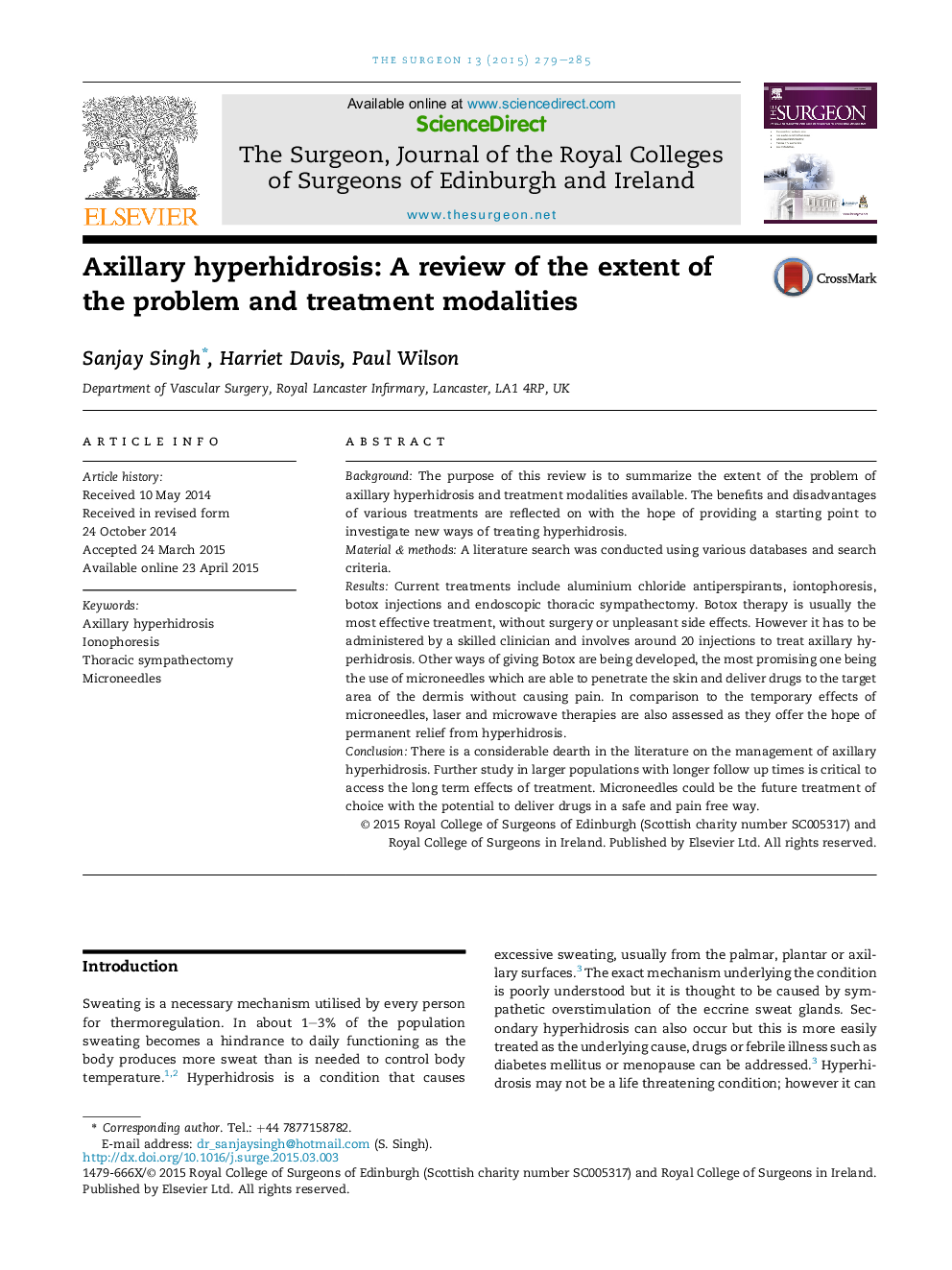| Article ID | Journal | Published Year | Pages | File Type |
|---|---|---|---|---|
| 3178478 | The Surgeon | 2015 | 7 Pages |
BackgroundThe purpose of this review is to summarize the extent of the problem of axillary hyperhidrosis and treatment modalities available. The benefits and disadvantages of various treatments are reflected on with the hope of providing a starting point to investigate new ways of treating hyperhidrosis.Material & methodsA literature search was conducted using various databases and search criteria.ResultsCurrent treatments include aluminium chloride antiperspirants, iontophoresis, botox injections and endoscopic thoracic sympathectomy. Botox therapy is usually the most effective treatment, without surgery or unpleasant side effects. However it has to be administered by a skilled clinician and involves around 20 injections to treat axillary hyperhidrosis. Other ways of giving Botox are being developed, the most promising one being the use of microneedles which are able to penetrate the skin and deliver drugs to the target area of the dermis without causing pain. In comparison to the temporary effects of microneedles, laser and microwave therapies are also assessed as they offer the hope of permanent relief from hyperhidrosis.ConclusionThere is a considerable dearth in the literature on the management of axillary hyperhidrosis. Further study in larger populations with longer follow up times is critical to access the long term effects of treatment. Microneedles could be the future treatment of choice with the potential to deliver drugs in a safe and pain free way.
